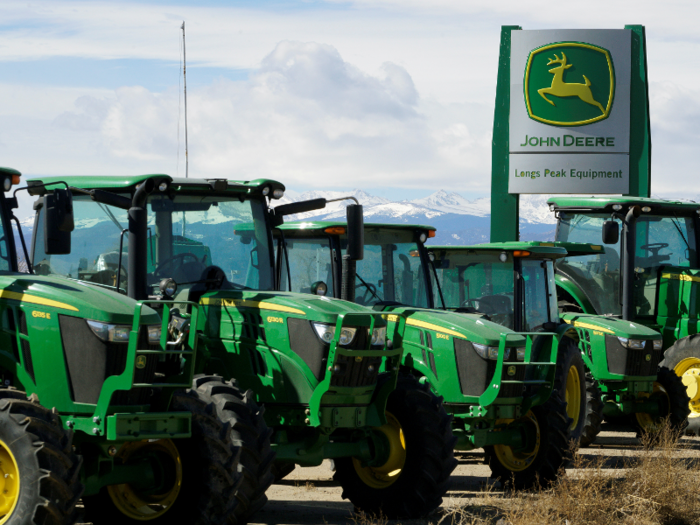
What the industry does: Manufactures tractors and other agricultural equipment.

What the industry does: Manufactures products made of rubber.

What the industry does: Sells petroleum products at wholesale to other businesses.

What the industry does: Sells raw materials produced on farms at wholesale to other businesses.

What the industry does: Produces metal alloys and materials that don't include iron.

What the industry does: Sells fuel and ice to consumers.

What the industry does: Employs workers like butlers, housekeepers, and cooks in private households.

What the industry does: Produces food and other crops.

What the industry does: Produces lumber from forestry activities.

What the industry does: Cleans or dyes clothing.

What the industry does: Produces steel and iron alloys and materials.

What the industry does: Moves goods and people over bodies of water in ships.

What the industry does: Covers activities involving producing steel or other iron alloys and materials outside of the blast furnace, steel works, and rolling mills industry.

What the industry does: Manufactures clothing and accessories.

What the industry does: Manufactures tobacco products like cigarettes.

What the industry does: Transports goods and people over railroads using trains.

What the industry does: Produces yarn and other textiles.

What the industry does: Produces shoes and other footwear.

What the industry does: Mines coal for power generation or other industrial processes.

What the industry does: Manufactures knit clothing and other goods.
 A couple accidentally shipped their cat in an Amazon return package. It arrived safely 6 days later, hundreds of miles away.
A couple accidentally shipped their cat in an Amazon return package. It arrived safely 6 days later, hundreds of miles away. A centenarian who starts her day with gentle exercise and loves walks shares 5 longevity tips, including staying single
A centenarian who starts her day with gentle exercise and loves walks shares 5 longevity tips, including staying single  2 states where home prices are falling because there are too many houses and not enough buyers
2 states where home prices are falling because there are too many houses and not enough buyers "To sit and talk in the box...!" Kohli's message to critics as RCB wrecks GT in IPL Match 45
"To sit and talk in the box...!" Kohli's message to critics as RCB wrecks GT in IPL Match 45
 7 Nutritious and flavourful tiffin ideas to pack for school
7 Nutritious and flavourful tiffin ideas to pack for school
 India's e-commerce market set to skyrocket as the country's digital economy surges to USD 1 Trillion by 2030
India's e-commerce market set to skyrocket as the country's digital economy surges to USD 1 Trillion by 2030

Copyright © 2024. Times Internet Limited. All rights reserved.For reprint rights. Times Syndication Service.